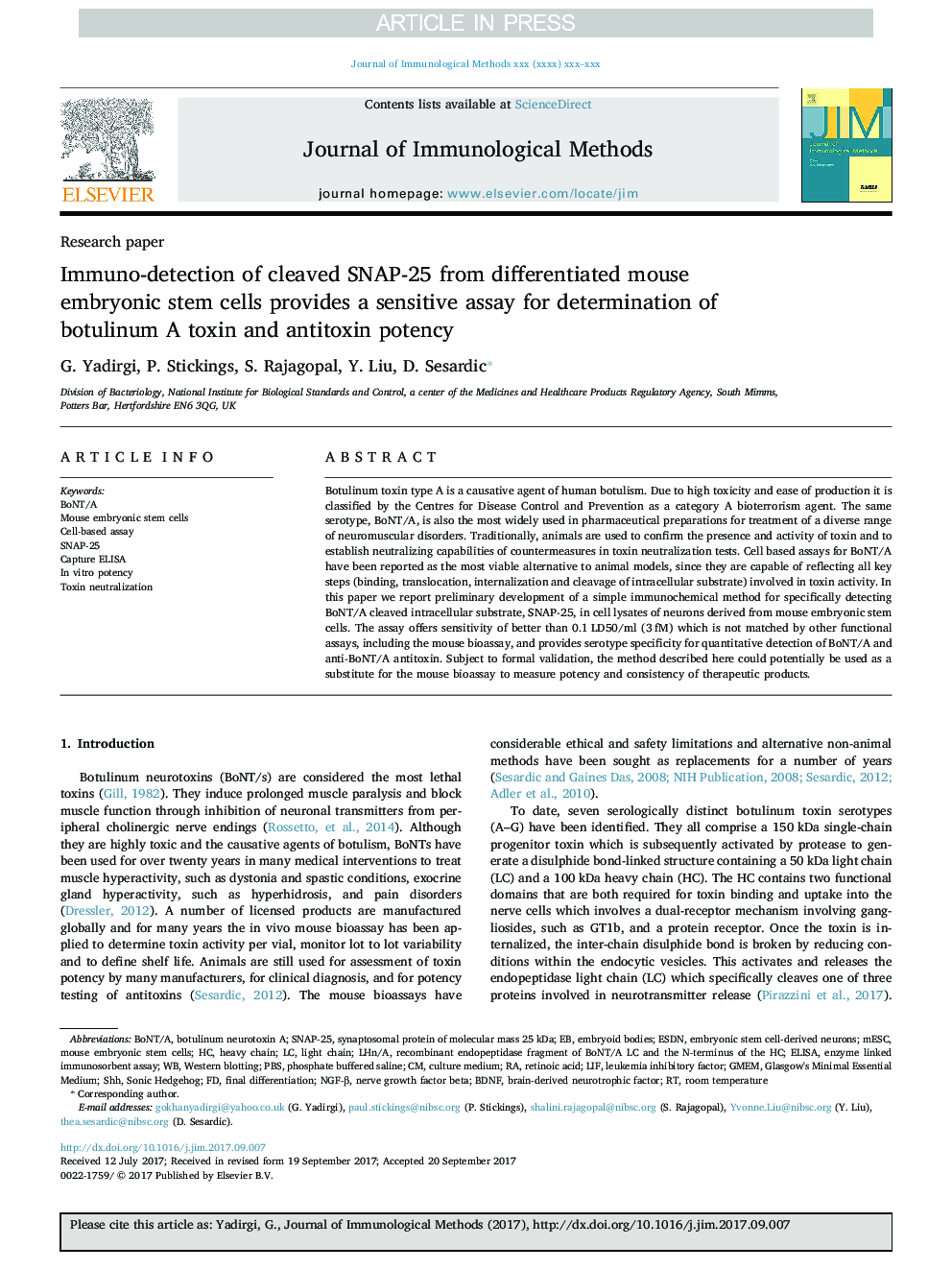| Article ID | Journal | Published Year | Pages | File Type |
|---|---|---|---|---|
| 8417030 | Journal of Immunological Methods | 2017 | 10 Pages |
Abstract
Botulinum toxin type A is a causative agent of human botulism. Due to high toxicity and ease of production it is classified by the Centres for Disease Control and Prevention as a category A bioterrorism agent. The same serotype, BoNT/A, is also the most widely used in pharmaceutical preparations for treatment of a diverse range of neuromuscular disorders. Traditionally, animals are used to confirm the presence and activity of toxin and to establish neutralizing capabilities of countermeasures in toxin neutralization tests. Cell based assays for BoNT/A have been reported as the most viable alternative to animal models, since they are capable of reflecting all key steps (binding, translocation, internalization and cleavage of intracellular substrate) involved in toxin activity. In this paper we report preliminary development of a simple immunochemical method for specifically detecting BoNT/A cleaved intracellular substrate, SNAP-25, in cell lysates of neurons derived from mouse embryonic stem cells. The assay offers sensitivity of better than 0.1Â LD50/ml (3Â fM) which is not matched by other functional assays, including the mouse bioassay, and provides serotype specificity for quantitative detection of BoNT/A and anti-BoNT/A antitoxin. Subject to formal validation, the method described here could potentially be used as a substitute for the mouse bioassay to measure potency and consistency of therapeutic products.
Keywords
SNAP-25GMEMLIFeSDNmESCPBSBDNFBoNT/ACell-based assayenzyme linked immunosorbent assayELISAembryoid bodiesToxin neutralizationShhRoom temperatureRetinoic acidlight chainheavy chainMouse embryonic stem cellssonic hedgehogCapture ELISAleukemia inhibitory factorBrain-derived neurotrophic factorPhosphate buffered salineculture mediumBotulinum neurotoxin AWestern blotting
Related Topics
Life Sciences
Biochemistry, Genetics and Molecular Biology
Biotechnology
Authors
G. Yadirgi, P. Stickings, S. Rajagopal, Y. Liu, D. Sesardic,
